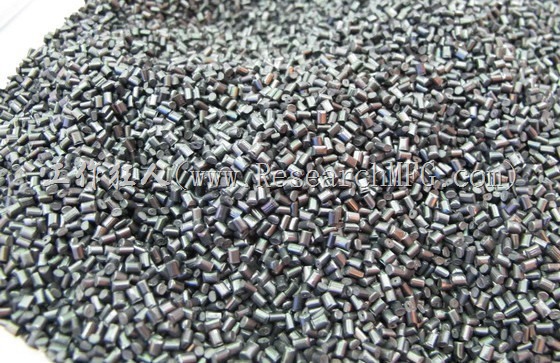
The use of re-grind resin and recycled material in plastic injection molding is a persistent challenge for engineers. The more re-grind resin or recycled material is added, the more severe the degradation of the plastic becomes. This degradation weakens the material’s structural strength and increases the risk of brittle fractures, especially in stress-bearing areas such as hooks and screw holes.
However, incorporating re-grind and recycled materials in plastic parts is also an environmental issue. To support sustainability and reduce waste, adding an appropriate amount of re-grind or recycled material during the injection molding process can help balance material performance and environmental protection.
But why does the use of re-grind and recycled materials reduce the strength of plastic?
This issue can be analyzed from two perspectives:
1. Quality Control Issues with Re-grind and Recycled Material Sources
First, let’s clarify the difference between “re-grind resin” and “recycled material.” Re-grind resin refers to in-process waste, such as sprues, runners, or scrap materials generated during production. Recycled material, on the other hand, comes from post-consumer waste that has been collected, processed, and repurposed into raw material.
Why do plastic manufacturers add re-grind or use recycled materials? Is it purely for environmental reasons, like creating a greener planet or reducing waste? While these factors exist, the primary motivation is cost savings. Re-grind resin is significantly cheaper than virgin plastic resin. But do manufacturers always use re-grind or recycled materials from the same original source? For example, if you specify Sabic’s PC (polycarbonate) material, will the supplier use re-grind or recycled resin from the same brand, or will they mix it with PC from other brands—or worse, blend it with ABS, which is completely incompatible with PC?
This is why re-grind or recycled materials should not be used in critical engineering plastic parts that require high precision or strength. Even with strict control over the ratio of re-grind material, quality issues are difficult to avoid.
Another factor is the storage conditions of these materials. Re-grind and recycled materials are often stored improperly—left outside in the sun, exposed to wind, rain, and other environmental conditions. Imagine a plastic chair left under the sun for an extended period. Over time, it fades, and eventually becomes brittle and cracks. Similarly, improperly stored re-grind and recycled materials undergo physical degradation, making their properties unpredictable and unreliable.
2. Differences in MFI Before and After Injection Molding
Now, let’s assume the plastic manufacturer is conscientious and only uses virgin material or re-grind resin from the same brand and with the same properties. Even in this case, there is still a significant issue: the Melt Melt Flow Index (MFI) of the plastic typically increases by 20–30% after the injection molding process. This indicates that the structural strength of the plastic decreases after processing.
For thermoplastic plastics, their molecular chains are long, high-molecular-weight structures that entangle with each other, creating strong bonds. However, during the injection molding process, the material undergoes intense heat, shear forces, and mechanical stress from the screw barrel of the machine. These forces cause long molecular chains to break into shorter ones, a phenomenon known as “chain scission.” As a result, the molecular weight decreases, and the intermolecular strength is weakened, leading to reduced material strength. (For more details, refer to The Rheological Properties of Plastics.)
Why Do Molecular Chains Break?
Consider this: when the plastic pellets first enter the screw barrel of the injection machine, they are in a solid state. The screw applies significant force to push the pellets forward as they begin to melt. Before melting, some pellets are physically fractured by the screw’s mechanical force. Once melted, the material becomes viscous, but if the screw speed is too high, the molten plastic near the barrel wall experiences strong shear forces. These forces break the long molecular chains, further contributing to the degradation of the material.
In summary, while re-grind and recycled materials offer cost and environmental benefits, their use requires careful consideration and control to avoid compromising the strength and reliability of plastic parts.
》Back to Plastic & Injection Molding
Related Posts:







Leave a Reply